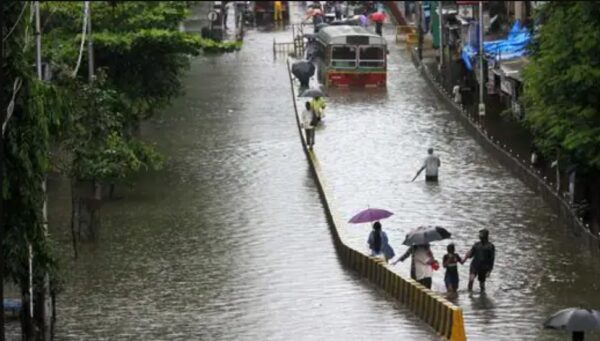 The India Meteorological Department (IMD) has predicted a cyclonic circulation is likely to form over Northwest Bay of Bengal during the next five days.
The India Meteorological Department (IMD) has predicted a cyclonic circulation is likely to form over Northwest Bay of Bengal during the next five days.
Heavy rainfall spells have also been forecast over Uttarakhand and central India including West Madhya Pradesh and Vidarbha and Chhattisgarh and Konkan & Goa, Central Maharashtra and Odisha and Himachal Pradesh .
According to the Central Water Commission, In the national capital, the Yamuna water level at 2pm yesterday stood at 205.87 metres, which was higher than the danger mark of 205.33 metres.
The scale of the rise in extreme weather events in India has been charting new highs with every passing year. 2023 began on a hotter note, with temperatures in February breaking the 123-year-old record. The humid heatwave in April and June over East and Central India was 30 times more likely due to climate change.
Over the last couple of days, extremely heavy rainfall is wreaking havoc across Northwest India. The climate emergency is getting more severe than ever.
On July 3, the world’s average temperature climbed to its highest level since records began in 1979. However, the record lasted only for a day as it was broken again on July 4 (17.18°C) and July 6 (17.23°C), deepening fears about the far-reaching effects taking place in Earth’s system.

Climate change has brought with it a series of extreme weather events including skewed and anomalous rainfall distribution across India during monsoon, floods in Northeast India, flash floods and landslides in Himachal Pradesh and Uttarakhand, torrential rains in Delhi, heatwaves, and extremely severe cyclone Biparjoy.
Both meteorologists and climate scientists have been blaming increasing levels of global warming for a steep increase in extreme weather events.
Several reports and researches have already established the impact of climate change on Indian Monsoon patterns. However, it has also been tampering with atmospheric as well oceanic phenomena, which has further multiplied the implications of global warming.
Global warming is making a significant contribution but there are some other factors as well. Firstly, El Nino has taken shape, which is amplifying global temperatures. Secondly, wildfires have been in three times larger areas, releasing three times of carbon into the atmosphere,
and increasing greenhouse gases. Thirdly, the North Atlantic Ocean is in a warmer phase. Fourth, the Arabian Sea has warmed unexceptionally since January, infusing more moisture over North-Northwest India.
Since the middle of the twentieth century, India has witnessed a rise in average temperature;
a decrease in monsoon precipitation; a rise in extreme temperature and rainfall events, droughts, and sea levels; and an increase in the intensity of severe cyclones, alongside other changes in the monsoon system. There is compelling scientific evidence that human activities have influenced these changes in regional climate.
The IPCC Report, ‘Weather and Climate Extreme Events in a Changing Climate’ had already
warned that summer and monsoon precipitation will also increase and become more frequent.
The Indian sub-continent will have a 20 percent surge in extreme rainfall events. The projections suggest that rainfall will become incessant and erratic leading to floods, depressions will intensify into deep depressions, and cyclonic events will become more frequent across eastern and western coasts. Further, if global warming increases, some compound extreme events, with a low likelihood (of occurrence) in past and current climate, will become more frequent, and there will be a higher likelihood that events with increased intensities, durations and/or spatial extents, unprecedented in the observational record, will
occur (high confidence)
 Jubilee Post News & Views
Jubilee Post News & Views





